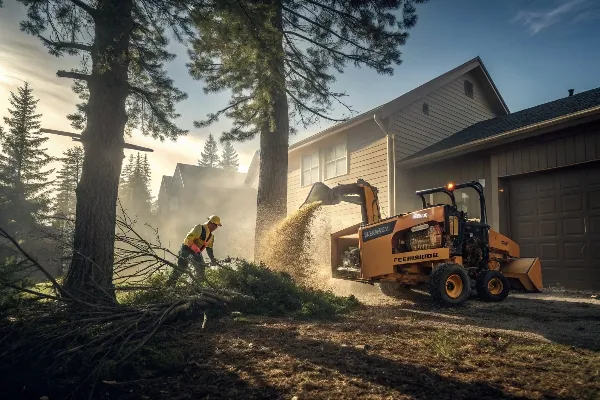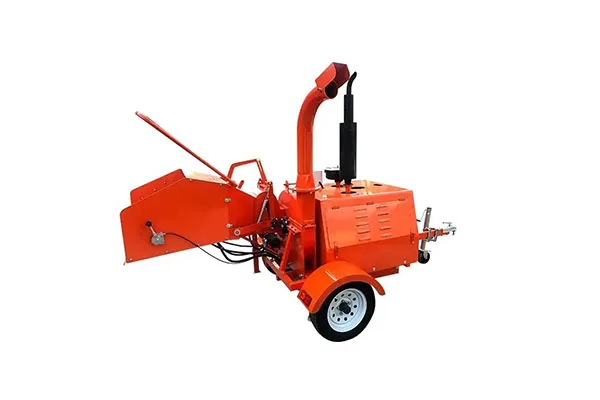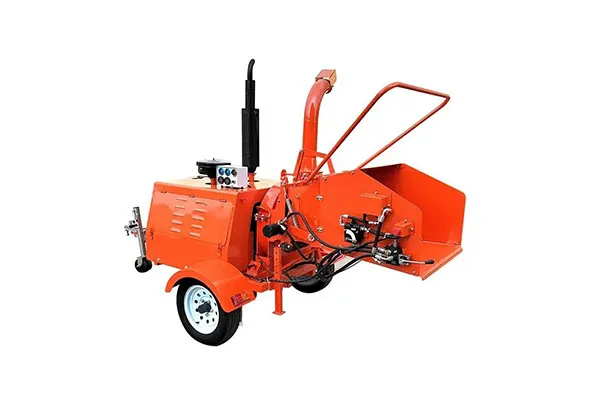Avoid your inquiry is delay response, please enter your WhatsApp/Skype along with the message, so we can contact you at the very first time.
We will reply you within 24 hours. If for urgent case, please add WhatsApp/WeChat: +8613791936882 ,. Or call +86-18678911083 directly.
If you have a yard full of branches and debris, cleaning up can be exhausting. A wood chipper might seem like the perfect solution, but is it worth the investment?
Yes, buying a wood chipper is worth it if you regularly deal with yard waste. It helps reduce waste volume, provides mulch for landscaping, and saves money on disposal fees. However, consider the cost, maintenance, and storage space before purchasing.

Wood chipper in action
A wood chipper can be a game-changer for property owners, gardeners, and landscapers. However, it is not for everyone. Let’s dive deeper into its benefits and potential drawbacks.
Some materials can damage your wood chipper, causing safety hazards and reducing its lifespan.
Never put metal, plastic, rocks, wet leaves, large roots, or treated wood in a wood chipper. These materials can dull the blades, cause damage, or even lead to dangerous malfunctions. Always follow the manufacturer’s guidelines.

What not to put in a wood chipper
Here’s a breakdown of why certain materials should be avoided:
| Material | Reason to Avoid |
|---|---|
| Metal | Can damage the blades and cause sparks |
| Plastic | Can wrap around internal components and clog the machine |
| Rocks | Can dull or break the blades |
| Wet leaves | Can clog the system, reducing efficiency |
| Large roots | May be too tough for the machine to handle |
| Treated wood | Releases harmful chemicals when chipped |
Using the wrong materials can result in expensive repairs or potential injuries. Always inspect materials before feeding them into the chipper.
The lifespan of a wood chipper depends on its build quality, maintenance, and usage frequency.
A well-maintained wood chipper can last 10-20 years. Regular cleaning, blade sharpening, and proper usage significantly extend its lifespan. Gas-powered models tend to outlast electric ones due to their durable engines.

Long-lasting wood chipper
Several factors determine how long your wood chipper will function properly:
| Factor | Impact on Lifespan |
|---|---|
| Maintenance | Regular maintenance extends life |
| Frequency of Use | More frequent use leads to faster wear |
| Type of Material Processed | Hardwood wears blades faster than softwood |
| Storage Conditions | Keeping it dry prevents rust and corrosion |
| Engine Type | Gas-powered models last longer than electric ones |
To get the most out of your chipper, follow the recommended maintenance schedule and store it properly.
Dull blades make wood chipping inefficient and can strain the machine.
Yes, you need to sharpen wood chipper blades regularly. Blades should be sharpened after every 10-15 hours of use or when you notice reduced performance. Dull blades can cause jams and increase engine wear.

Wood chipper blade sharpening
Sharpening the blades ensures clean, efficient cuts1 and reduces strain on the motor.
Keeping the blades sharp improves efficiency, reduces fuel consumption, and prevents damage.
A wood chipper’s effective lifespan depends on how well it is maintained and the type of workload it handles.
A wood chipper remains effective for 5-15 years with proper care. Heavy-duty models with regular maintenance last longer, while budget models may wear out sooner. Routine inspections help determine when replacement parts are needed.
Even with good maintenance, there comes a time when replacing a wood chipper2 is necessary. Here are some signs:
| Sign of Wear | What It Means |
|---|---|
| Frequent blade replacements | The motor is working too hard |
| Reduced chipping efficiency | Internal parts may be worn out |
| Strange noises or vibrations | Bearings or motor parts may be failing |
| Excessive fuel consumption | Engine may not be running efficiently |
If you notice these issues, consider upgrading to a newer model instead of investing in costly repairs.
A wood chipper is a valuable investment for homeowners, gardeners, and landscapers. It saves time, reduces yard waste, and creates useful mulch. However, proper maintenance is crucial to maximizing its lifespan. Choosing the right materials, sharpening blades, and following safety guidelines ensure long-term efficiency.